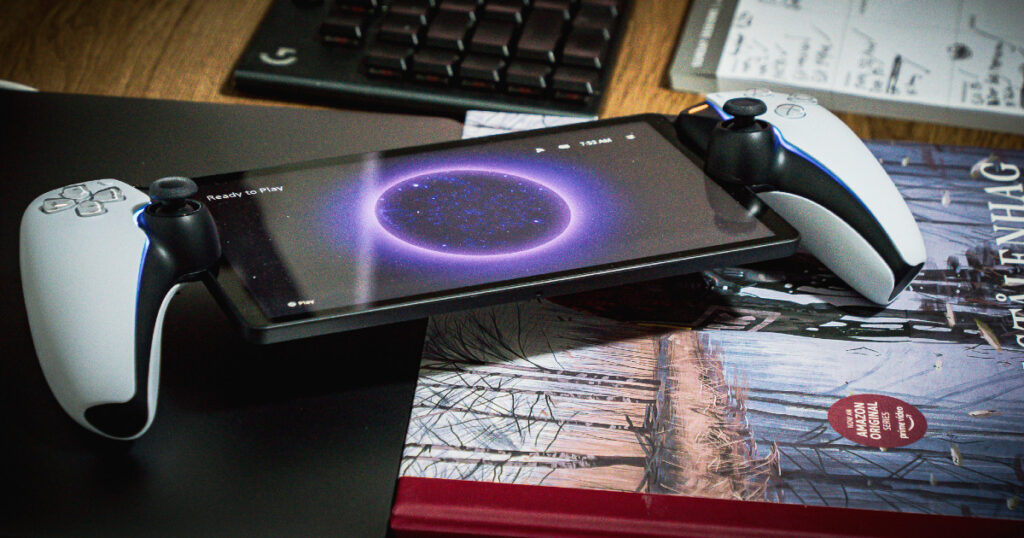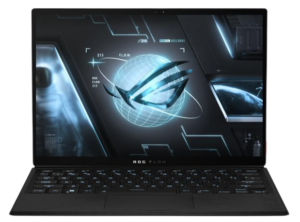ASUS shoved a Core-i9 processor into a gaming tablet. It rules.
ASUS’ ROG Flow Z13 could be the breakthrough gaming tablet you’ve been waiting for
The ROG Flow Z13 could be ASUS’ most significant contribution to the wider gaming PC ecosystem since the original Zephyrus. Picking up where last year’s experimental ROG Flow X13 left off, the new Z13 refines the formula by ditching the 2-in-1 form factor and going all in on being a high-performance gaming tablet.
The short version: this bet pays off. In the long run, it's easy to imagine the ROG Flow Z13 could end up being a turning point for a whole new category of portable gaming hardware. Right now though, it’s more of an expensive curiosity than anything else. There's a lot to like about it, but not quite enough to offset the toll it exacts when it comes to price.
Still, even with a price tag this taxing, the ROG Flow Z13 is impressive enough in action that it’s easy to imagine something like it emerging as a compelling alternative to both traditional gaming laptops and newer handhelds like the Steam Deck. Early adopters will be happy with what the ROG Flow Z13 delivers today, but it's much more exciting to think about what it could inspire tomorrow.
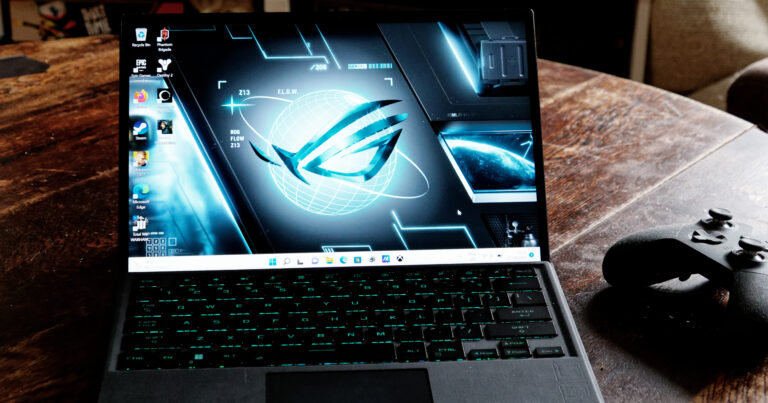

What to look for when buying a gaming laptop
The beginner's guide to buying a gaming laptop.
How much does the ROG Flow Z13 cost in Australia?
In Australia, the ASUS ROG Flow Z13 retails for around $3,399. That price makes it one of the most expensive tablets out there.
While there aren’t many other gaming tablets to directly compare the Z13 against when it comes to cost, a maxed-out out iPad Pro starts at $3,549 and last year’s X13 can be found for around $1,999.
ASUS ROG Flow Z13 - Design and features
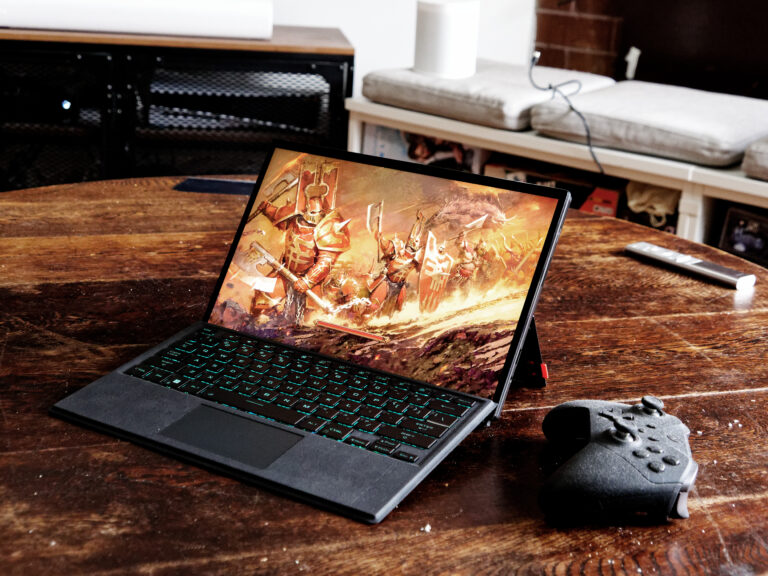
The ASUS ROG Flow Z13 sells itself as a souped-up version of one of Microsoft’s Surface tablets. Like the latest Surface Pro 8, the machine uses a slate-like design with a built-in kickstand.
As with its biggest inspiration, the ROG Flow Z13 comes complemented by a detachable keyboard made of rubberised materials that serve to make up the difference between this leaner form factor and that of a traditional laptop. But where the kickstand on the latest Microsoft Surface tablet caps out 150 degrees of flexibility, the ROG Z13 goes all the way to 170 degrees.
And while Microsoft’s tablets opt for a more clean and more professional look, the ROG Flow Z13 leans towards an entirely different breed of aesthetic tendencies. The ROG Flow Z13 is all the way in on the LED-laden looks that consumers associate with gaming brands like Razer, Alienware, MSI and, naturally, ASUS’ own Republic of Gamers. The most telltale signs of this can be found on the rear of the tablet, which incorporates both faux circuitry patterns and a view window that provides a peek at the silicon powering the portable PC.
The ASUS ROG Flow Z13 is utterly guiltless about playing into the "gamer tech" stereotype, but if that works for you, you’ll probably like what’s on offer here.
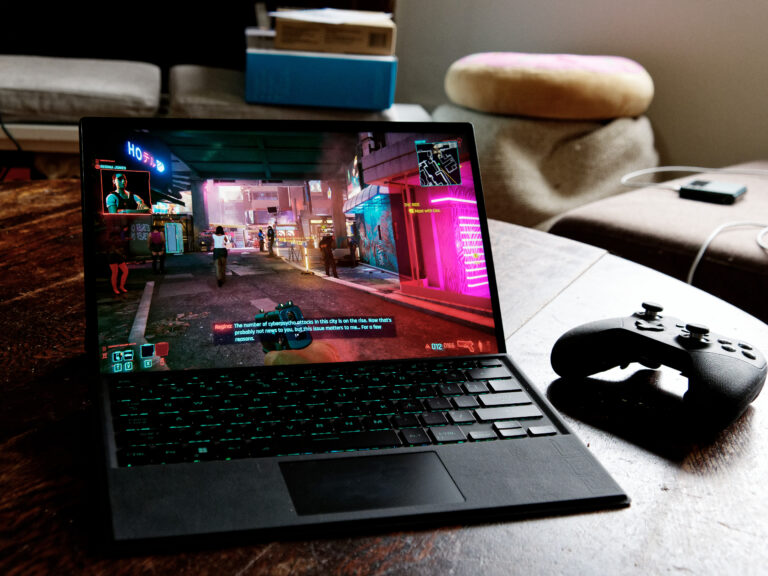
More than just style, the ASUS ROG Flow Z13 also comes kitted out with many of the substantive, albeit smaller, details that typically separate gaming laptops from their more mainstream counterparts.
To that end, the Flow Z13’s keyboard has 1.7mm of travel, full N-key rollover and RGB back-lighting that can be customized via ASUS’ Aura Sync software. These bells and whistles would barely register on a gaming laptop, but given the dearth of gaming tablets like this one out there, they make it hard to argue that ASUS hasn't outfitted the Flow Z13 with the right tools for the job.
Consumers have the option of making the 13.4-inch screen on the Flow Z13 4K at 60Hz or FHD at 120Hz. Given the gaming focus of the hardware, I’d strongly recommend the latter over the former. Either way, the touch-sensitive display on the ROG Flow Z13 still boasts a 16:10 aspect ratio, thin bezels, Pantone-validated colour, plus adaptive sync and Dolby Vision support.
Similarly, ASUS have armed the ROG Flow Z13 with a similar bevy of specs when it comes to the audio side of the equation. The gaming tablet features dual smart amp speakers that support playback of both Hi-Res Audio and Dolby Atmos content. These outputs are matched by a high-SNR 3-microphone array with built-in noise-cancelling and a 720p front-facing webcam. There’s also an 8-megapixel rear camera, but this feels borne of obligation rather than any genuine utility.
There’s plenty of room for improvement here relative to content-creation workstations like Gigabyte’s AERO 15 OLED and dedicated gaming machines like the new Alienware m15, but the fact that this is a tablet rather than a traditional laptop counts for a lot. Used regularly, the ROG Flow Z13 feels like a better fit for gaming in the same way that a gaming laptop is just that bit better suited than a more mainstream and non-specialised alternative.
That dynamic applies just as much when it comes to the inspirations that ASUS have drawn from when it comes to form-factor. On one hand, the advantages that a tablet offers in terms of raw versatility and weight over a fully-fledged gaming laptop are clear. On the other, the usual disadvantages also apply, from the cramped trackpad to the smaller battery.
The ROG Flow Z13 is exactly what it appears to be, for better or worse. Even if it breaks down barriers for tablet performance, many of the other caveats associated with this style of the portable computer remain doggedly intact.
ASUS ROG Flow Z13 specs
ASUS ROG Flow Z13 - Software and performance
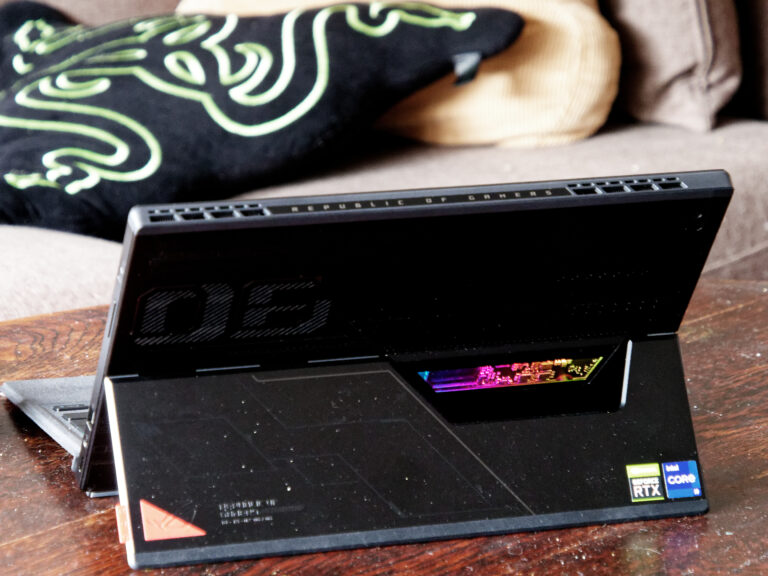
While the ROG Flow Z13 isn’t capable of running Cyberpunk 2077 at the highest possible graphical settings, it gets closer than you might expect. I wouldn’t hesitate to say that CD Projekt Red’s vision of Night City looks better and runs better on this thing than it does on my RTX 3060 Ti-powered desktop gaming setup, even if it did take some tinkering to find the right settings for it.
More recent and more demanding titles like Total War: Warhammer 3 tended to be more taxing on the Flow Z13. However, if you’re willing to lower your expectations (or the in-game settings) to compensate, then things are no less playable than they are with a modest desktop setup.
All told, those looking for an excessively portable and powerful gaming machine will likely find that the Flow Z13 delivers on expectations. Games like Destiny 2, Death Stranding, Rise of the Tomb Raider and Phantom Brigade ran smoothly and without issues. While the Flow Z13’s fans were sometimes audible, the vapour chamber setup inside the tablet and the natural ergonomics of using it on a table kept either from becoming too much of an issue.
Still, if you do find the performance lacking here, ASUS will happily sell you a solution in the form of the ROG XG Mobile. This optional eGPU accessory comes kitted out with a Radeon RX 6850M XT GPU that’s capable of picking up where the Nvidia RTX mobile card inside the Flow Z13 leaves off.
It’s unfortunate that the software side of the equation is less of a clean win, with the ROG Flow Z13 often feeling a little overstuffed by comparison. Pre-installed software like Armory Crate and MyASUS do allow you to tinker with and optimize the hardware here, but they also contribute friction that feels at odds with everything that works in the Flow Z13’s favour.
The strongest argument for buying this particular device over something cheaper or more conventional is flexibility. I don't just mean that in a literal sense. Sure, the fact that the ROG Flow Z13 is a tablet rather than a laptop does make it a little easier to squeeze some on-the-go gaming into your life. I'm talking about that it runs on the latest version of Windows. There’s something really compelling about the idea of taking a tablet with this level of portability and being able to mine the depths of your decades-old Steam collection without having to worry about the hardware limits usually involved with something this sleek.
Unfortunately, the battery life of the ROG Flow Z13 acts as something of a counterweight to all the possibilities that the form factor and performance bring to the table. The battery life here is not great by the metrics of tablets, with the battery inside the Flow Z13 taking around 4 hours and 40 minutes to burn down via streaming video on YouTube. If we compare the Flow Z13 against laptops like the Razer Book 13, it fares even worse.
The unsurprising but disappointing reality is that if you are trying to run Cyberpunk 2077 on this thing, it’ll burn out fast. Even half an hour of something a little less intensive, like Necromunda, chewed through over 50% of the ROG Flow Z13's battery life. If you’re playing something older or lighter, you’ll probably be able to squeeze a bit more playtime out of any given single charge.
Fortunately, regardless of how quickly you burn through the battery inside the tablet, the ROG Flow Z13 doesn’t take that long to charge back up. The device supports fast charging of up to 100W, which can get you from nothing to half-charge in about half an hour. This adds a silver lining to what is otherwise the ROG Flow Z13's most glaring shortcoming.
Is the ASUS ROG Flow Z13 worth buying?
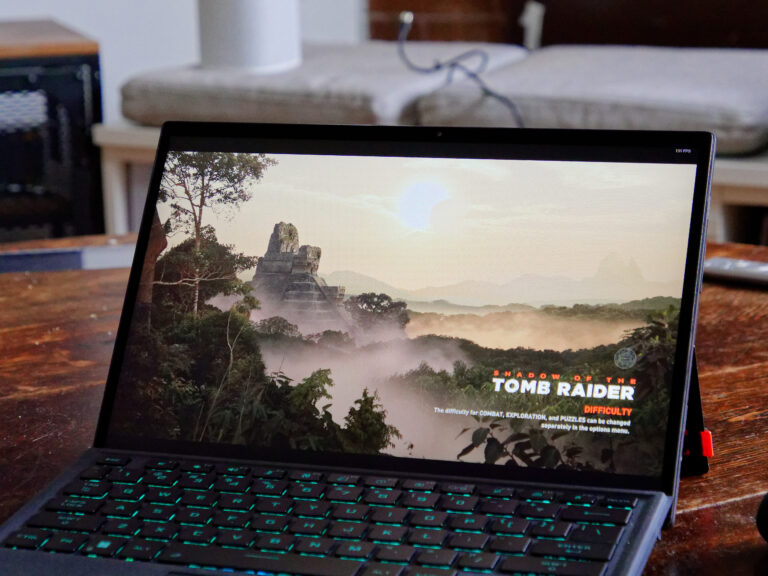
I can’t really recommend the Flow Z13 to most consumers right now, but I wouldn’t be surprised if a follow-up from ASUS or an imitator from another gaming brand wins me over in the near future.
More than mere proof of concept, the ASUS ROG Flow Z13 is proof that tablet-based gaming isn’t just a stray experiment but an inevitable evolution that can stand alongside - and hold its own against - more traditional gaming laptops.
It’s unarguably too expensive for mainstream consumers, but enthusiasts seeking a different breed of portable gaming PC might find the unique combination of power and portability offered by the ROG Flow Z13 tempting in a way that nothing else on the market can match.
Related Articles

